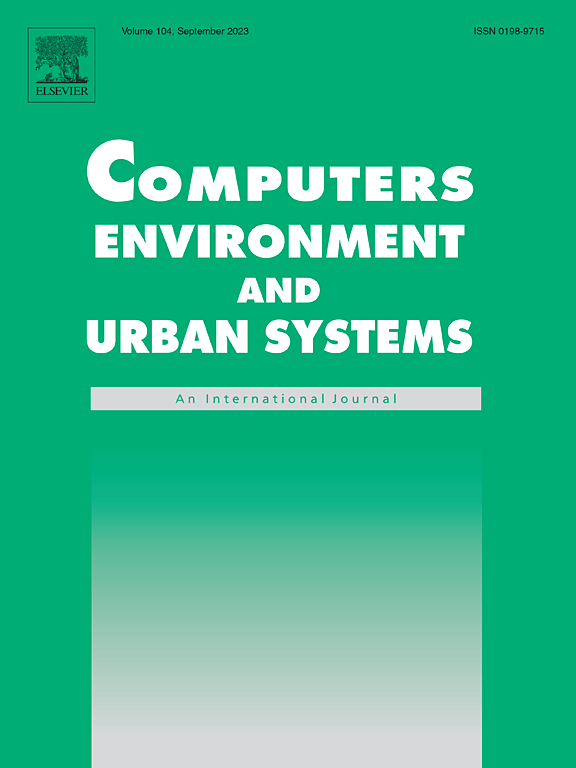特征对齐的深度对比学习:来自住房-家庭关系推断的见解
IF 8.3
1区 地球科学
Q1 ENVIRONMENTAL STUDIES
Computers Environment and Urban Systems
Pub Date : 2025-08-03
DOI:10.1016/j.compenvurbsys.2025.102328
引用次数: 0
摘要
住房和家庭特征是社会和经济福祉的关键决定因素,但我们对其相互关系的理解仍然有限。本研究利用美国社区调查(ACS)公共使用微数据样本(PUMS)开发了一个深度对比学习(DCL)模型来推断住房-家庭关系,从而解决了这一知识差距。更广泛地说,所提出的模型适用于一类问题,其目标是学习两个不同实体之间的联合关系,而没有明确标记的基础真值数据。我们提出的双编码器DCL方法利用了PUMS中的共现模式,并引入了一种二分k均值聚类方法来克服缺乏基础真值标签的问题。双编码器DCL架构旨在处理住房(建筑)和家庭(人)特征之间的语义差异,同时减轻聚类带来的噪声。为了验证模型,我们生成了一个合成的地面真实数据集并进行了全面的评估。与最先进的方法相比,该模型进一步证明了其在捕捉特拉华州住房与家庭关系方面的卓越表现。在北卡罗来纳州进行的一项可转移性测试证实了它在不同社会人口和地理背景下的普遍性。最后,使用SHAP值的事后可解释人工智能分析表明,在住房-家庭匹配中,使用权地位和抵押信息比传统上强调的因素(如人数和房间数量)发挥更重要的作用。本文章由计算机程序翻译,如有差异,请以英文原文为准。
Deep contrastive learning for feature alignment: Insights from housing-household relationship inference
Housing and household characteristics are key determinants of social and economic well-being, yet our understanding of their interrelationships remains limited. This study addresses this knowledge gap by developing a deep contrastive learning (DCL) model to infer housing-household relationships using the American Community Survey (ACS) Public Use Microdata Sample (PUMS). More broadly, the proposed model is suitable for a class of problems where the goal is to learn joint relationships between two distinct entities without explicitly labeled ground truth data. Our proposed dual-encoder DCL approach leverages co-occurrence patterns in PUMS and introduces a bisect K-means clustering method to overcome the absence of ground truth labels. The dual-encoder DCL architecture is designed to handle the semantic differences between housing (building) and household (people) features while mitigating noise introduced by clustering. To validate the model, we generate a synthetic ground truth dataset and conduct comprehensive evaluations. The model further demonstrates its superior performance in capturing housing-household relationships in Delaware compared to state-of-the-art methods. A transferability test in North Carolina confirms its generalizability across diverse sociodemographic and geographic contexts. Finally, the post-hoc explainable AI analysis using SHAP values reveals that tenure status and mortgage information play a more significant role in housing-household matching than traditionally emphasized factors such as the number of persons and rooms.
求助全文
通过发布文献求助,成功后即可免费获取论文全文。
去求助
来源期刊

Computers Environment and Urban Systems
Multiple-
CiteScore
13.30
自引率
7.40%
发文量
111
审稿时长
32 days
期刊介绍:
Computers, Environment and Urban Systemsis an interdisciplinary journal publishing cutting-edge and innovative computer-based research on environmental and urban systems, that privileges the geospatial perspective. The journal welcomes original high quality scholarship of a theoretical, applied or technological nature, and provides a stimulating presentation of perspectives, research developments, overviews of important new technologies and uses of major computational, information-based, and visualization innovations. Applied and theoretical contributions demonstrate the scope of computer-based analysis fostering a better understanding of environmental and urban systems, their spatial scope and their dynamics.
 求助内容:
求助内容: 应助结果提醒方式:
应助结果提醒方式:


